1.) How do I select the right size of carburetor?
Carburetor performance is largely based on the air speed traveling through its venturis. If they are too big, the air speed will be reduced; too small and vice versa. Probably the best instruction on carburetor choice is found in the Demon Carburetor Selection guide. It is based on camshaft duration at 0.050in of valve lift, the type of intake manifold (dual plane or single plane), and the type of transmission (manual or automatic) and stall speed. Beyond this, it is always best to discuss carburetor selection with a qualified technician.2.) What is one of the most commonly overlooked carburetor-tuning issues?
One of the greatest obstacles faced by amateur carburetor tuners is failing to understand the essentials of initial ignition timing. Ignition timing is affected by a host of elements including fuel type, mixture strength, combustion chamber shape, compression ratio, temperature, and humidity. Bigger camshafts and larger cylinder heads with matched intake manifolds require increased ignition timing to promote better air velocity and maintain efficiency.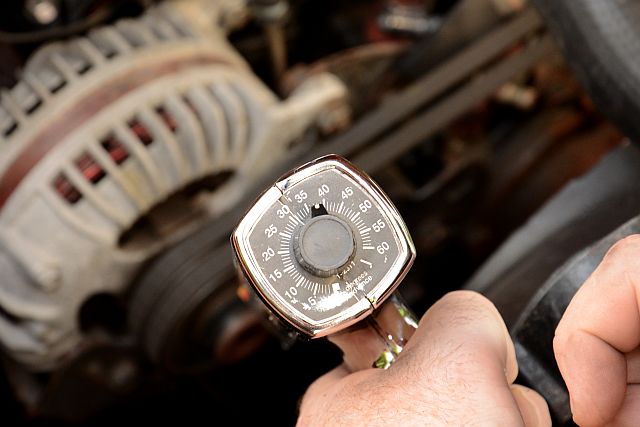 Thus the carburetor is helpless in its plight if the initial timing is late or the timing advance curve is slow. These two potential timing impediments frequently exhibit poorer starting and drivability troubles. The ignition is always timed to fire the spark plug before the piston reaches Top Dead Center (TDC) in the cylinder. Firing before TDC is necessary because of the time it takes for the flame front to ignite the air-fuel mixture in the cylinder. Demon’s carburetor selection guide consists of helpful recommendations on ignition timing settings with consideration to things such as camshaft duration, valve lift, and other contributing factors to assist in the timing process.
Thus the carburetor is helpless in its plight if the initial timing is late or the timing advance curve is slow. These two potential timing impediments frequently exhibit poorer starting and drivability troubles. The ignition is always timed to fire the spark plug before the piston reaches Top Dead Center (TDC) in the cylinder. Firing before TDC is necessary because of the time it takes for the flame front to ignite the air-fuel mixture in the cylinder. Demon’s carburetor selection guide consists of helpful recommendations on ignition timing settings with consideration to things such as camshaft duration, valve lift, and other contributing factors to assist in the timing process.
When carburetor or drivability complications occur under 3,000 rpms, improper timing is usually contributing to issues such as rich idle, hesitation, or dying when switching gears and stopping.
3.) What carburetor tuning myths do tuners frequently fall victim to?
In carburetor mythology, probably the most misleading dogma involves changing jets in order to cure a rich idle setting. Carburetor main jets are tuned solely to achieve one thing: the best performance at fully open throttle. Jets should never be changed to correct an idle impediment. Instead, the idle circuit should be adjusted and the initial ignition timing re-checked. Setting the idle mixture to the highest vacuum can be achieved by using a vacuum gauge connected to the constant-vacuum port of the carburetor base plate. Slowly adjust the first idle-mixture screw. Make one adjustment only to the first screw. The adjustment should be no more than an eighth- or quarter-turn. Then leave sufficient time for the carburetor to respond and move to the next adjuster screw. Gradually work your way around the carburetor, making just one small, slow adjustment to each screw. Sloppy idle-speed adjustment is the carburetor’s number-one tuning problem. It causes the transfer slot to be overexposed and creates mayhem.Setting the idle mixture to the highest vacuum can be achieved using a vacuum gauge connected to the constant-vacuum port of the carburetor base plate to adjust each idle-mixture screw to its highest value. Keep moving around the carburetor, adjusting each screw an eighth- to a quarter-turn and waiting for the carburetor to respond.

Overexposure of the transfer slot at idle and insufficient initial ignition timing are the two chief causes of carburetor troubles. In the idle condition, the transfer slots should give the appearance of a small square when viewed from underneath the base plate, and ignition timing should be double-checked prior to any carburetor adjustments.
4.) Clogged jets or sloppy idle mixtures are often accused for hesitation or flooding under driving conditions, or starting and idling issues, but are there other things that could contribute to these issues?
Float adjustments are often a disregarded step of carburetor tuning, even though hesitation or an excess of black smoke from the exhaust could be the result of an improperly adjusted float level. After the idle mixture and ignition timing have been properly set, it is time to check the float levels.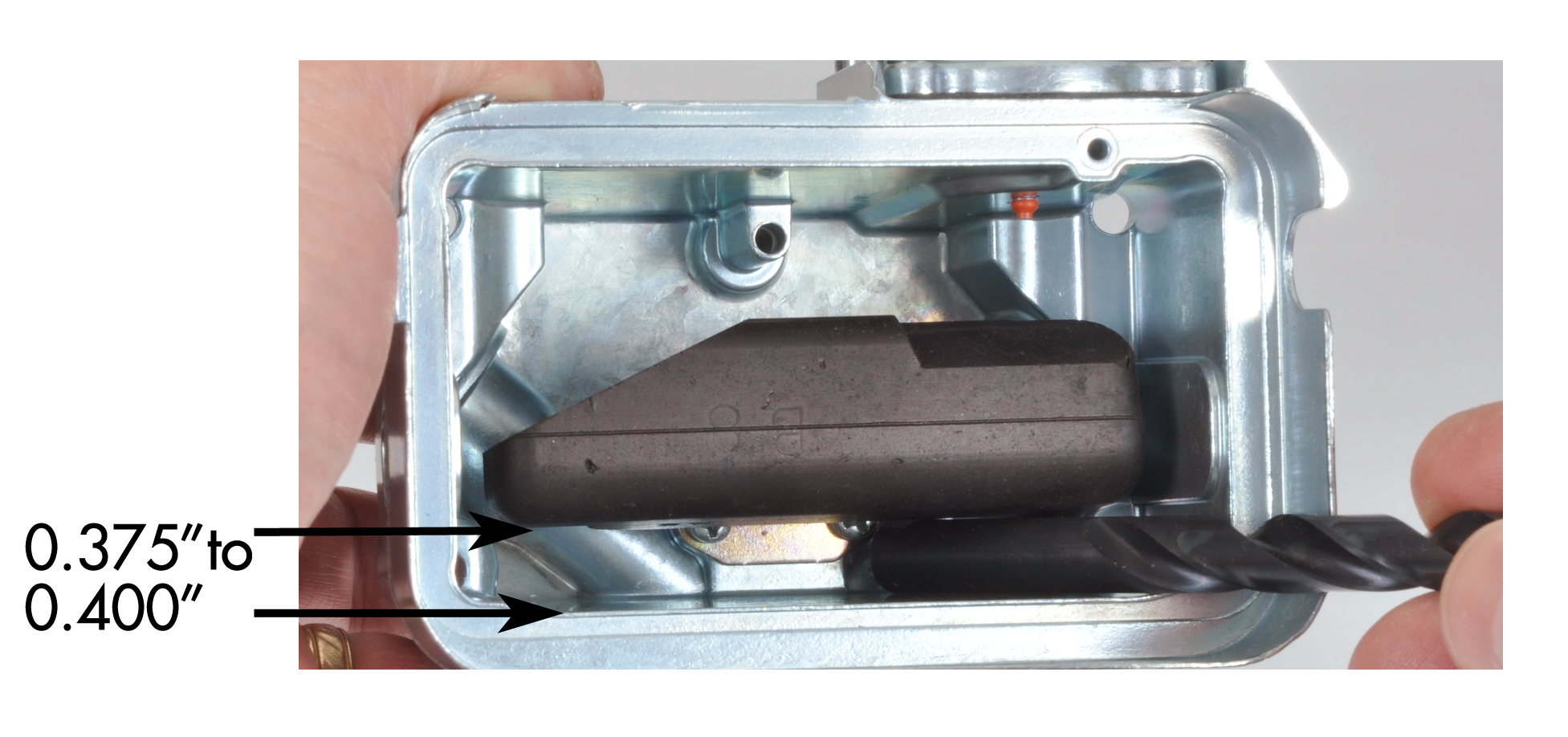 With the motor running, the fuel level should be in the middle of the glass window of the fuel bowl. If it isn’t, loosen the lock screw on top of the bowl and adjust the nut clockwise to lower the float level and counter-clockwise to raise the float level. Make the adjustment by one flat of the nut at a time and wait until the carburetor has had a chance to respond. The “dry setting” is accomplished by removing the fuel bowl, and with it turned upside-down, setting the dimension between the inside top of the bowl and the top of the float at approximately 0.375 in. to 0.0400 in.
With the motor running, the fuel level should be in the middle of the glass window of the fuel bowl. If it isn’t, loosen the lock screw on top of the bowl and adjust the nut clockwise to lower the float level and counter-clockwise to raise the float level. Make the adjustment by one flat of the nut at a time and wait until the carburetor has had a chance to respond. The “dry setting” is accomplished by removing the fuel bowl, and with it turned upside-down, setting the dimension between the inside top of the bowl and the top of the float at approximately 0.375 in. to 0.0400 in.
Float levels are often too high; they should be placed in the middle of the fuel bowl sight glass. The initial float setting when the carburetor is being assembled at the Demon factory (the dry setting) is accomplished by removing the fuel bowl and, with it turned upside-down, setting the dimension between the inside top of the bowl and the top of the float is set at approximately 0.375 in. to 0.0400 in
5.) What are the rules for mounting a fuel pressure regulator?
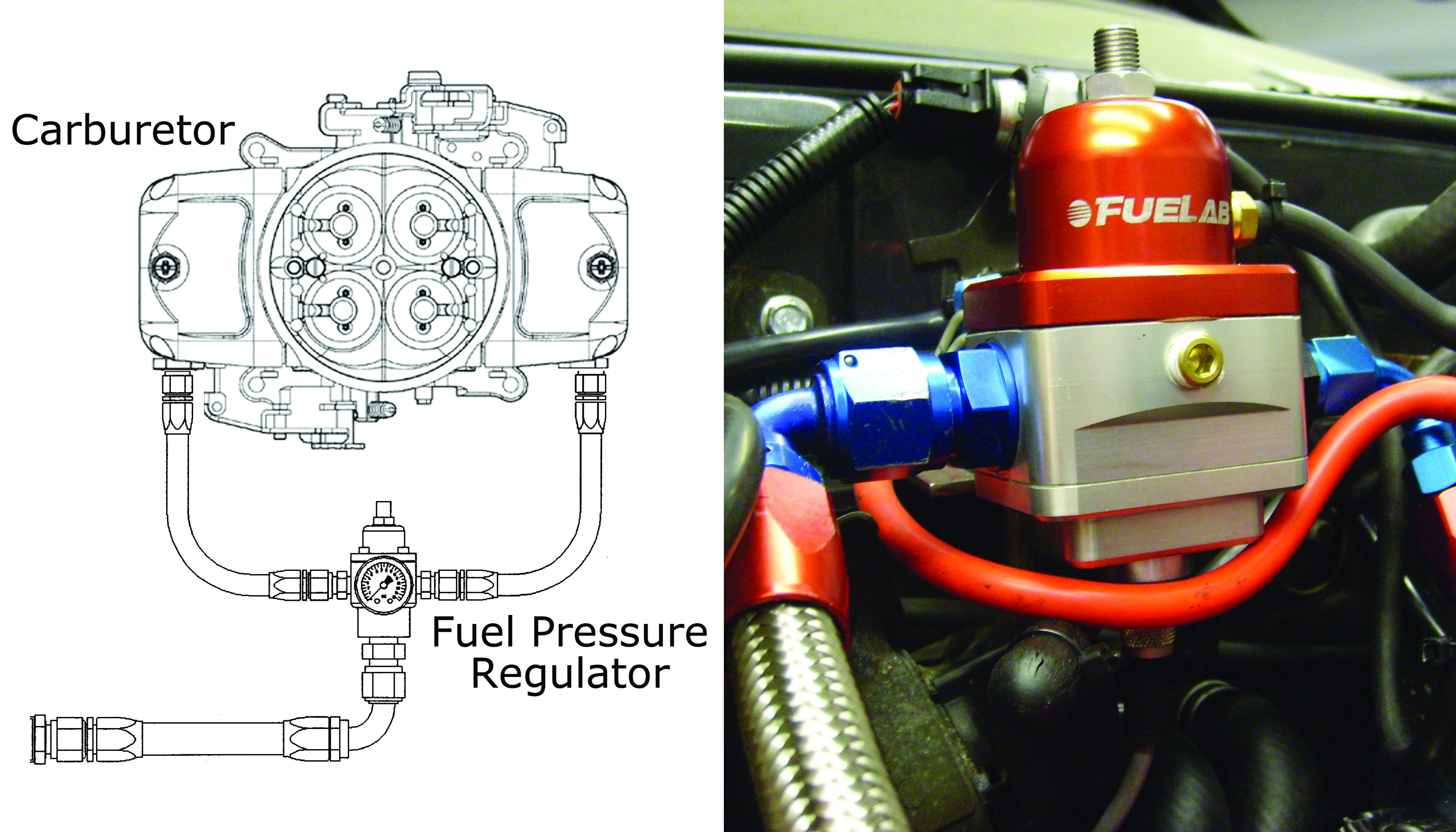 Avoid mounting the fuel pressure regulator on a bulkhead or inner fender well. Instead, position it close to the carburetor. As demonstrated by any data acquisition system, the further distance the fuel pressure regulator is mounted from the carburetor, the slower its reaction time.
Avoid mounting the fuel pressure regulator on a bulkhead or inner fender well. Instead, position it close to the carburetor. As demonstrated by any data acquisition system, the further distance the fuel pressure regulator is mounted from the carburetor, the slower its reaction time.
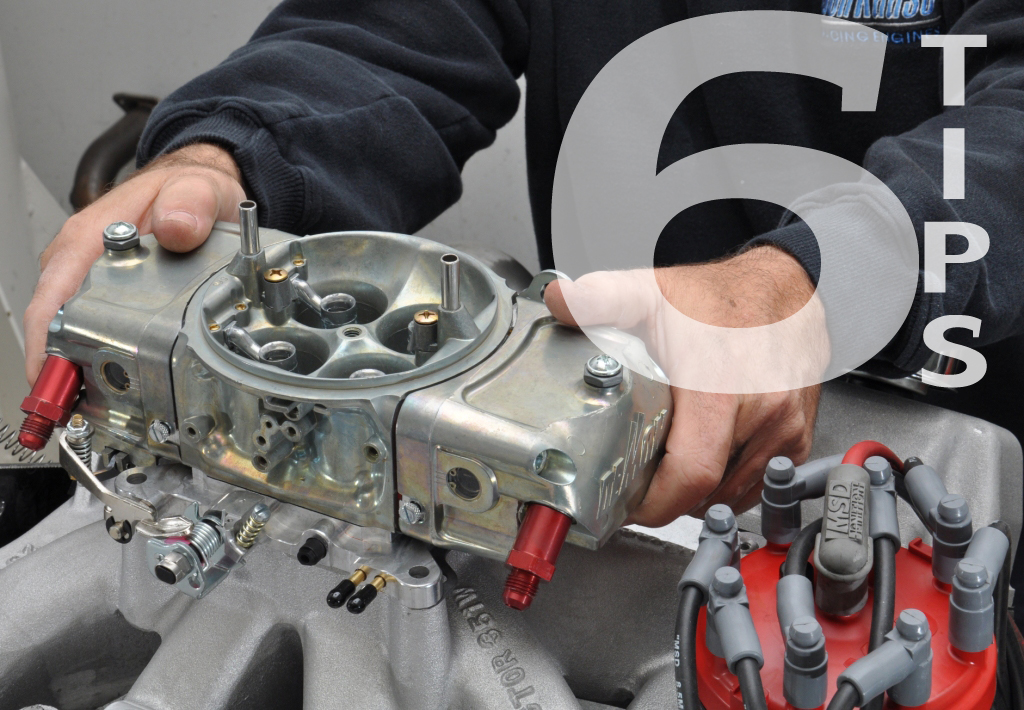
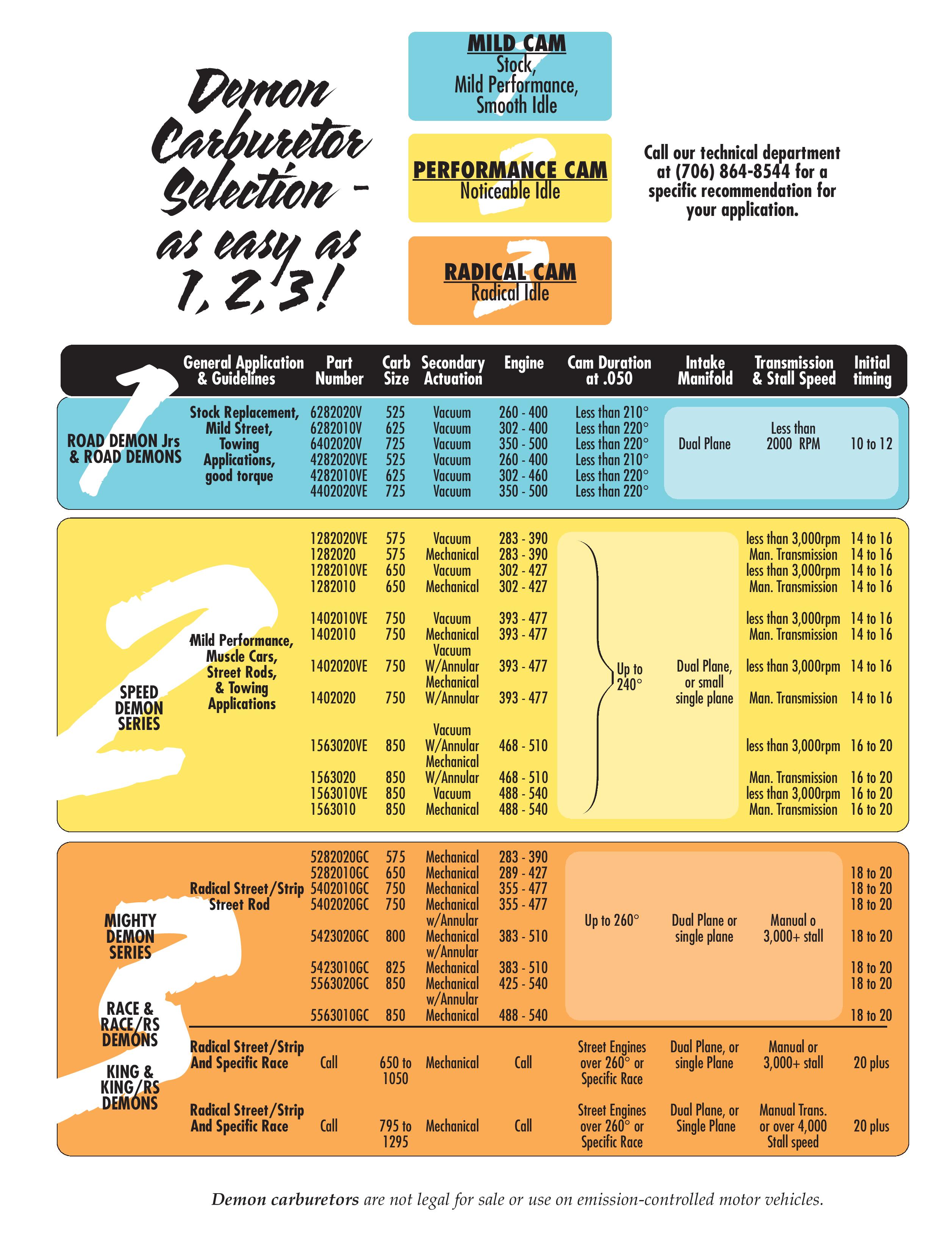
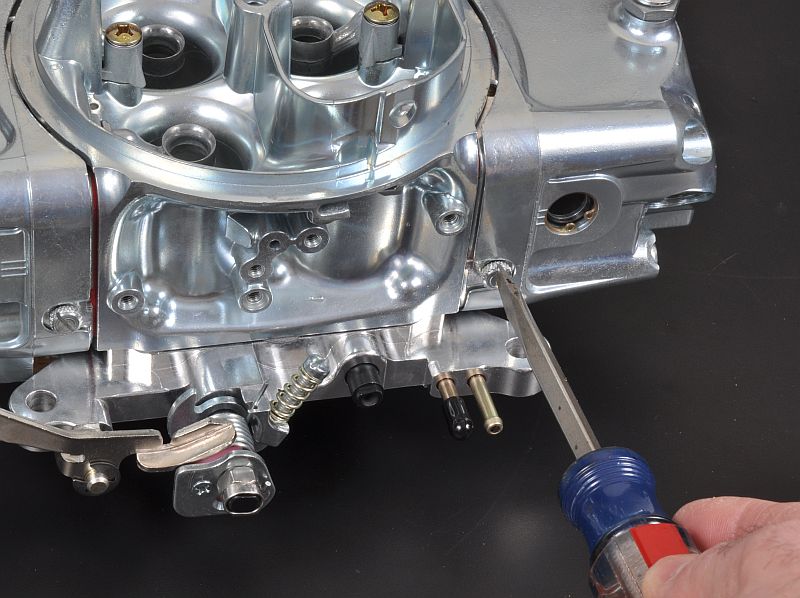
I have a 350 SB with a Weiand 142 supercharger and a Edelbrock 1406 carb. I haven't been able to dial the carb in correctly. I experience hesitation and stalling when I initially press on the gas peddle and occasional backfire when shutting down. It sounds that I might be running rich (backfire) but could use a comment/advise about the stalling and hesitation. I have to generally rev it up a bit before gently letting the clutch out to prevent the stalling. Appreciate the feedback. Thanks.
Good kmowledge
Planning to run an electric fuel pump on my 71 f100 with a 302 and automatic transmission. Stock engine. What fuel pressure should I be looking for.
Me gustó la explicación de los detalles
Hello, I need help switching from my 2 Barrel Rochester Carb set up to a 4 Barrel intake manifold and Carburetor. I have a 67 Olds Cutlass v8 330 bored .30 over with 9:1 compression. My question, what intake manifold do you recommend and what size/brand Carburetor for a daily driver? Any help is greatly appreciated. Best, Jerome
I have a Sunbeam Alpine with a 1592 engine. The carb has been converted to a Webber 32/36 manual choke. The previous owner installed a fast road cam. Inlet opens 32 BTDC vs stock 14. Closes 68 ABDC vs stock 52. Exhaust opens 68BBDC vs 56 BBDC. Ex closes 32 ATDC vs 10. The car starts and runs well. The idle screw is in as far as it can go and you have to keep your foot on the gas until fully warm or it stalls. The choke doesnt provide any fast idle. It is properly adjusted. The car has very little power under 3000 rpm, above that it's a lot of fun to drive. Any suggestions? Thanks.
Could use some advice. I have an early style Holley 4150 with the LeMans style center pivot bowls. It is a 715 CFM as used on the early GT 350's. Used atop a mildly modified 289 HiPo, a little more cam than stock, manual trans. The problem is getting the engine to idle below 900. No amount of adjustment seems to cure it, and have checked for vacuum leaks. Also so mid RPM hesitation. Anything I have missed?
Fo you have a viedo of this
My Holley 600cfm carb is mounted a a 300 plus HP 327 cu.in engine.. I have a "stumble" upon acceleration ( when passing or coming off the traffic lights) & I can not figure the issue out, Any suggestions ???
To be honest, most all of these articles and tips are above my experience level. ...adjusting floats in a carb would mean me buying a new carb and making another mortgage payment for the local mechanic...